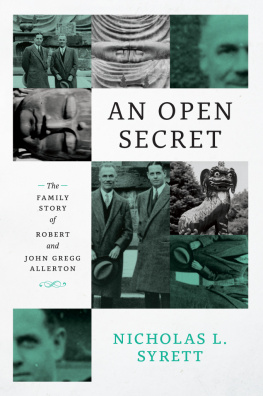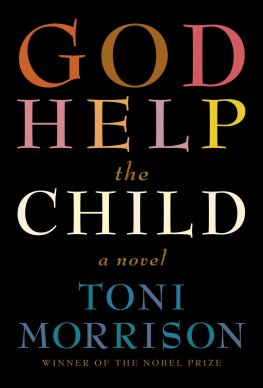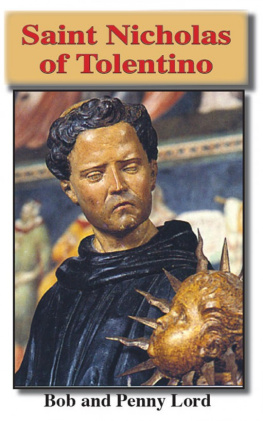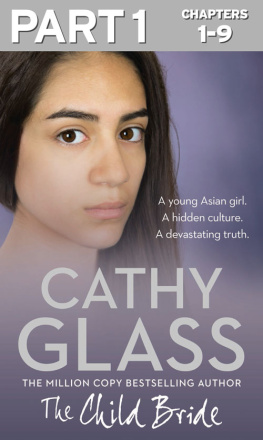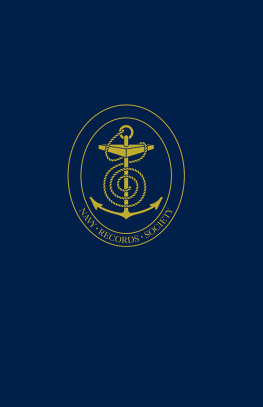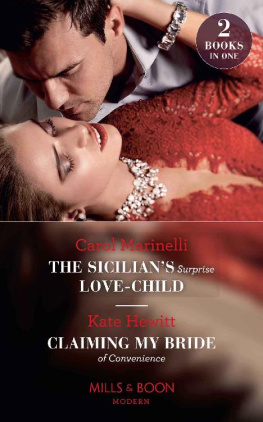Figures and Tables
FIGURES
Abel Stearns and Arcadia Bandini de Stearns
Mayne Reid
Seba Smith and Elizabeth Oakes Smith
Cassius Marcellus Clay and Dora Richardson Clay
Notice forbidding the marriage of Candas Beam
Francesca Carboni, rescued child bride
Frances and Edward Browning, Peaches and Daddy
Mary Ellen Richmond
Charlie and Eunice Johns
Herblock, In a State Where You Cant Teach Evolution
TABLES
1.1. Minimum Marriageable and Consent Ages in the Antebellum United States
2.1. Percentage of Males and Females Who Married under the Age of Twenty in Various Locations, 1850s
2.2. Percentage of Marrying Massachusetts Men and Women below the Age of Twenty by Year, 18441861
2.3. Number of Massachusetts Grooms and Brides of Certain Ages, 18541861
2.4. Number and Percentage of Total Grooms and Brides Marrying under Age Twenty in New York State, 18471848
5.1. Changes in Marriageable Age and Age of Consent, 18651920
6.1. Percentage of Married Girls Age Fifteen to Nineteen, 18801930
6.2. Percentage of Married Girls Age Fifteen to Eighteen, 19101930
7.1. Percentage of Married Girls in 1920 by Race and Nativity
7.2. Percentage of Married Boys in 1920 by Race and Nativity
7.3. Percentage of Married, Widowed, or Divorced Boys and Girls Age Fifteen to Nineteen, 19101920
8.1. Percentage of Married Girls in 1930 by Race and Age
8.2. Number of Married, Widowed, or Divorced Boys and Girls Age Fourteen and Under, 1930
9.1. Median Age at First Marriage for Men and Women, 19201970
9.2. Percentage of Married Boys and Girls, 19401970
9.3. Percentage of Married Teens Age Fifteen to Nineteen by Year, Sex, and Region, 19401960
9.4. Percentage of Married Girls Age Fifteen to Seventeen by Race, 19401960
9.5. Percentage of Married Boys and Girls Age Fifteen to Seventeen by Year and Region, 19401960
10.1. Median Age of First Marriage by Year, 19602010
10.2. Percentage of Married Girls and Boys Age Fifteen to Seventeen, 19602010
Acknowledgments
Although the final product might be similar, writing a book that did not begin as a dissertation feels like another kind of undertaking, almost like a different species of document. No longer are people obligated to help you: no institutionalized prodding and deadlines and helpful suggestions on draft after draft, no stern looks and veiled threats about funding (or the lack thereof). Because of that I am struck by just how generous so many people have been as I wrote this book. It gives me great pleasure to acknowledge them here.
First and foremost I must thank the libraries and archives, as well as the librarians and archivists, who helped me find the documents that allowed me to answer my questions. Thanks to the staff of the Social Welfare History Archives at the University of Minnesota (especially Linnea Anderson); the Bancroft Library at UC-Berkeley; the San Francisco Public Library (especially the staff of the Government Documents Reference Desk); the Denver Public Library; the James Michener Library at the University of Northern Colorado (Jay Trask, in particular); the Sophia Smith Collection at Smith College (particularly Maida Goodwin); the Brooklyn Collection at the Brooklyn Public Library (Alla Roylance); the Columbia University Rare Books and Manuscripts Library; the American Antiquarian Society; the Rockefeller Archives Center (Monica Blank); the New York Public Library; the New-York Historical Society; the Boston Public Library; the California Historical Society Library; the Robbins Rare Book Room in the Law Library at UC-Berkeley; Patty Heard and the staff of the Law Library at Berkeleys Boalt Hall School of Law, who uncomplainingly searched out state statutes and session laws for me for more than a month; the Huntington Library; the Library of Congress; John Gartrell and Sarah Carrier at the Duke University Library and Archives; the New York County Clerks Office; Heather Potter at the Filson Historical Society; and Carol Myers at the San Diego Historical Society. Thanks also to the staff of the following state libraries, archives, and research centers: New York (especially Nancy Horan); Tennessee (the always enthusiastic Allison DeFriese); North Carolina (Debra Blake); Texas (Megan Cooney); Maine (Nicole Dyszlewski and Anthony Douin); New Hampshire (Benoit Pelletier Shoja); Massachusetts (Jennifer Fauxsmith); California (Jessica Herrin); New Mexico (Felicia Lujan and Sibel Melik); Colorado; Ohio (Connie Connor); Washington (Erin Whitesel-Jones and Lupita Lopez); and Elizabeth Bouvier at the Massachusetts Supreme Judicial Court Archives.
I could not have completed this research without the generous support of a sabbatical leave, research monies from the Provosts Fund and the AVP for Research summer fund, and a course release from the RSCW program, all at the University of Northern Colorado. Also at UNC the Pilot Fund for Faculty Publications paid for the cost of reproducing the illustrations herein. I am grateful for a Clarke Chambers Travel Grant from the Social Welfare History Archives at the University of Minnesota and a travel grant to the John Hope Franklin Research Center in African and African American History and Culture at Duke University.
Thanks to a number of people who went out of their way to send me leads, point me in the direction of sources, or answer my questions: Corinne Field, Amanda Hendrix-Komoto, Holly Jackson, Lindsay Keiter, Jan Ellen Lewis, Katie Parkin, Rene Sentilles, Tavia Simmons at the U.S. Census Bureau, Rose Stremlau, and Chris Talbot. Sarah Arnusch and Cyrus Fernandez were excellent research assistants in the first stages of this project, and Im grateful for their help.
I was fortunate to be able to give talks about this material at a number of schools: the Bentley School, Case Western Reserve University, the University of Cincinnati, Indiana University, and the University of Michigan. Thanks to Jason Chang, Rene Sentilles, Mackenzie Keys, Erika Gasser, Colin Johnson, Kristin Hass, and Mary Kelley for inviting me. Thanks also to all of the chairs, commentators, and fellow conference panelists at meetings of the AHA, ASA, ASLH, Berks, NWSA, OAH, SAWH, SHA, and SHCY from whom I learned so much: Kristin Celello, Beth Clement, Tim Cole, Brian Connolly, Rebecca Davis, Rebecca de Schweinitz, Sari Edelstein, Corinne Field, Richard Godbeer, Michael Grossberg, Melissa Hayes, Tera Hunter, Holly Jackson, Colin Johnson, Will Kuby, Greta LaFleur, Adam Golub, Anna Krome-Lukens, Alison Lefkovitz, Sarah Levine-Gronningsater, Amanda Littauer, Jen Manion, Susan McKinnon, Allison Miller, Alexis Broderick Neumann, Rebecca Onion, Ishita Pande, Leslie Paris, Elizabeth Pleck, Johanna Rickman, Rene Romano, Don Romesburg, Lynn Sacco, Honor Sachs, Jim Schmidt, Bethany Schneider, Rene Sentilles, Julia Shatz, Rebecca Thaler Sherman, Christina Simmons, LaKisha Simmons, Stephen Vider, Barbara Young Welke, Barbara Bennett Woodhouse, and Karin Zipf. And for making those conferences so much fun: Dolores Ins Casillas, Jim Downs, Erika Gasser, Brian Halley, Colin Johnson, Will Kuby, Aaron Lecklider, Will Mackintosh, Jen Manion, Lucia McMahon, La Shonda Mims, Heather Murray, and Phil Tiemeyer.



